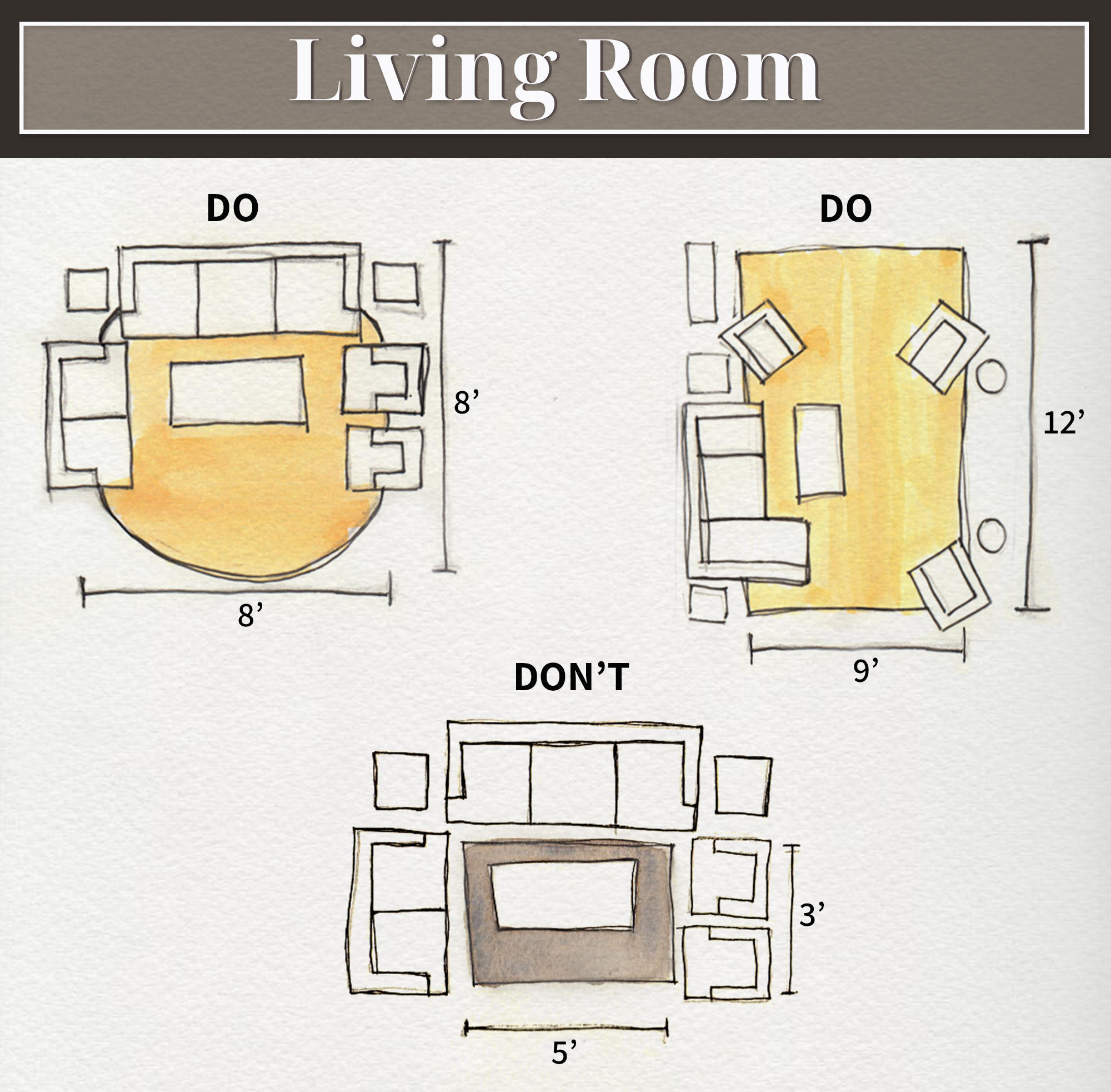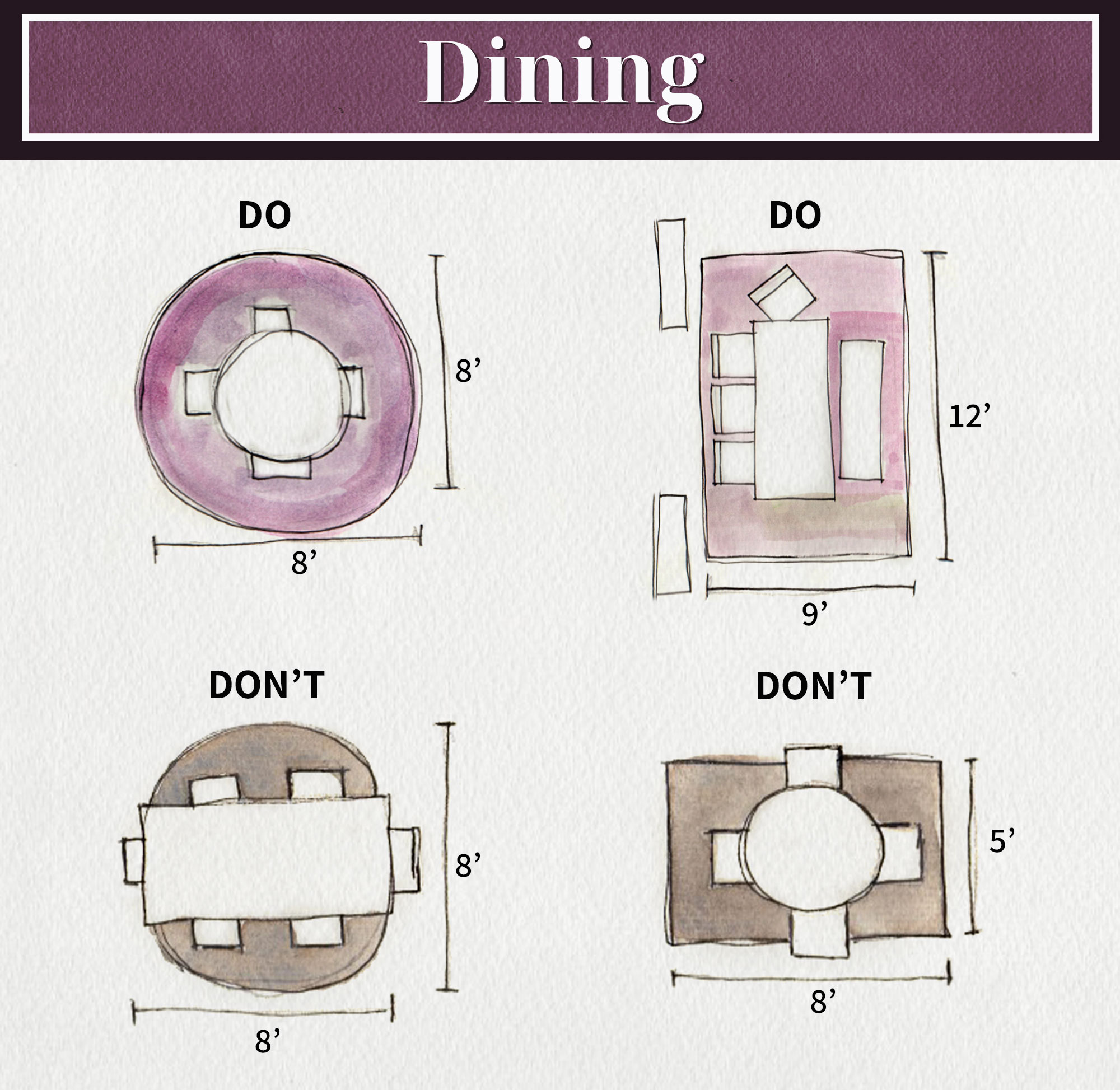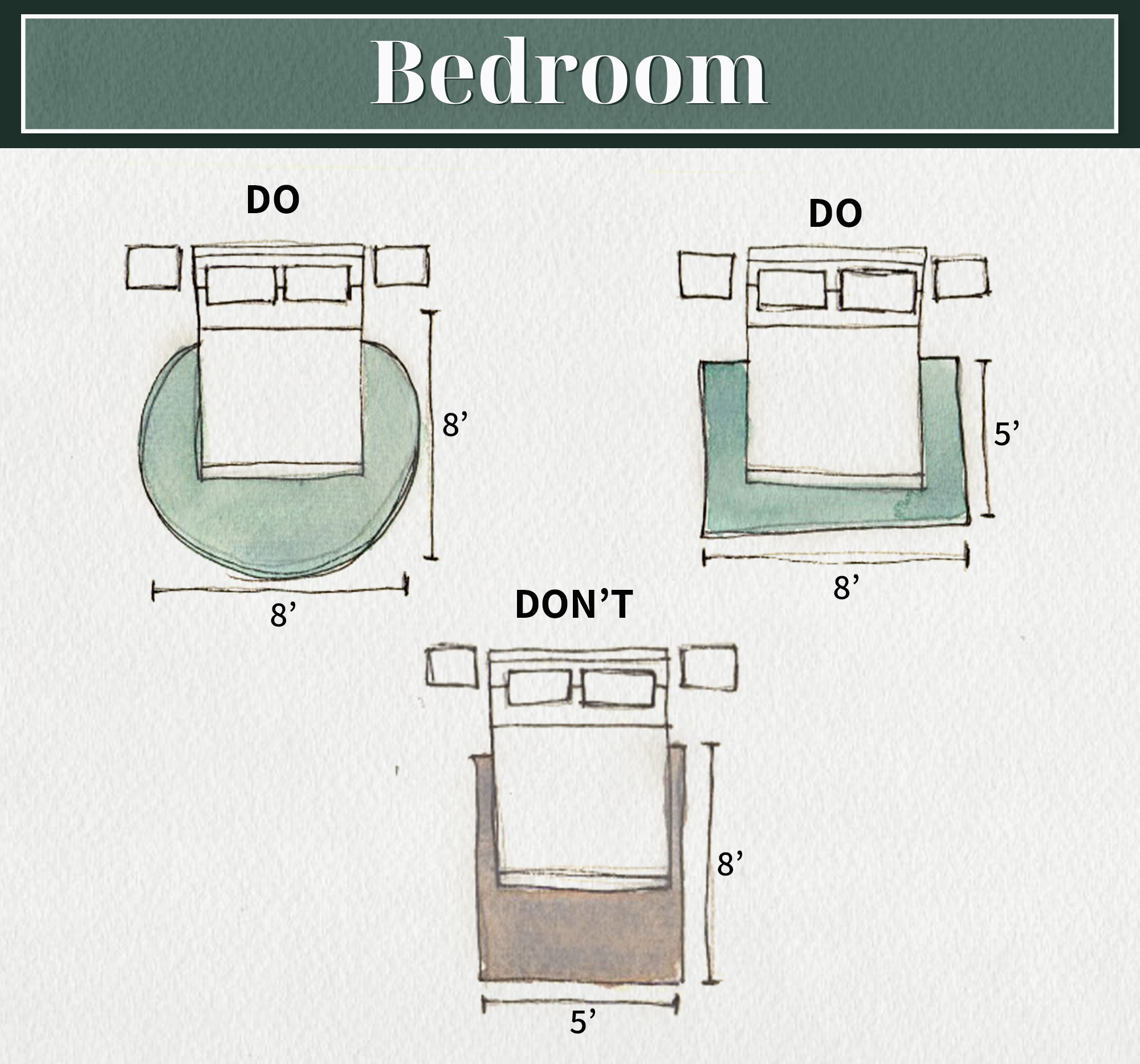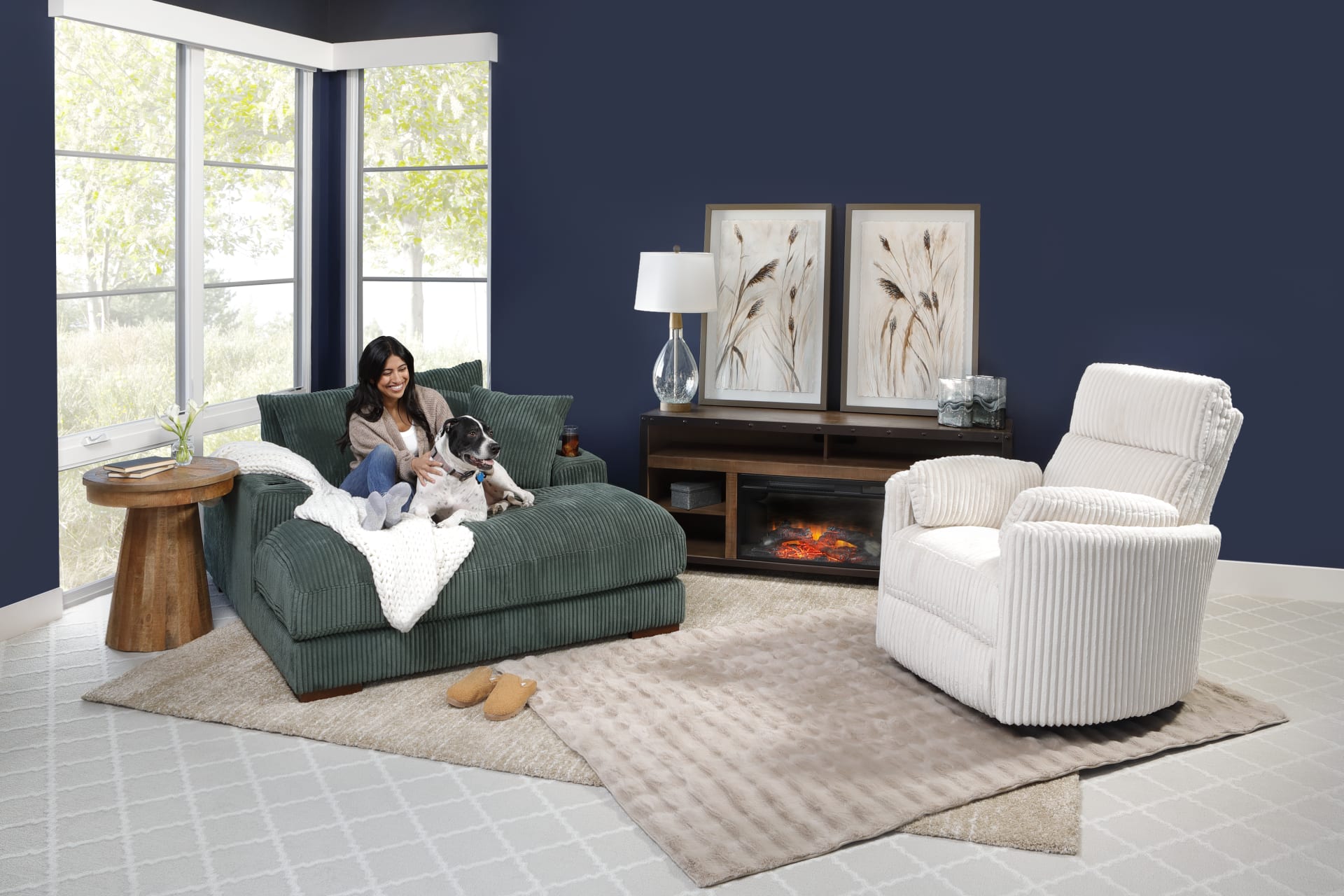Area Rug Size and Placement Guide
Area rugs are more than just decorative accents—they’re essential tools for defining spaces, adding warmth, and tying furniture together. However, choosing the wrong size or shape can throw off the balance of a room, making it feel awkward or incomplete. Whether you're styling your living room, dining room, or bedroom, understanding how to properly place an area rug is key to creating a harmonious and polished look.
In this guide, we’ll walk you through the dos and don’ts of area rug placement for every room in your home, complete with helpful visuals to ensure you get it right every time. Let’s dive in!


Living Room Area Rug Placement Guide
Do: Choose a rug that complements the size of your living room and anchors your furniture. For example:
- A large rectangular 8x11 rug is ideal for fitting all your furniture, including sofas, chairs, and coffee tables, completely or almost completely on the rug. This creates a cohesive and grounded look.
- A smaller circular or rectangular rug can also work if the front legs of all seating pieces like sofas and chairs are placed on the rug. This approach still ties the furniture together while being more budget-friendly.
Don’t: Avoid rugs that are too small for the shape of your space.
- Don’t choose a rug that’s too small—postage-stamp rugs under only the coffee table make the room feel disconnected and unfinished.


Dining Room Area Rug Placement Guide
Do: Select a rug that fully accommodates your dining set, including chairs when they’re pulled out.
- A large rectangular 8x11 rug works perfectly for a rectangular dining table, ensuring all chairs remain on the rug even when in use.
- For a round dining table, an 8x8 circular rug is a great match, as it mirrors the table’s shape and keeps all chairs comfortably on the rug.
Don’t: Avoid rugs that are too small to fit your dining set properly.
- A circular 8x8 rug under a rectangular dining table will feel cramped and awkward, with chair legs likely slipping off when pulled out.
- Similarly, a small 5x8 rectangular rug under a round dining table will fail to provide enough coverage for chairs, creating an unbalanced appearance.


Bedroom Area Rug Placement Guide
Do: Use rugs to enhance comfort and define your sleeping space.
- The best advice for any bedroom rug is to position it partially under the bed so only the front legs rest on it. This placement works well for both rectangular rugs and large circular rugs.
Don’t: Steer clear of rugs that are poorly positioned or too small.
- A rectangular rug placed parallel to the bed frame will leave the rug feeling small, making it feel disconnected from the rest of the bedroom layout. Similarly, a small rug that doesn't reach beneath the front legs of the bed will often look awkward and out of place.
Watch & Learn: Area Rugs
Want to go beyond placement rules and get even more expert tips you can use today? Check out our recent episode of Seated with Furniture Row, where our in-house experts do a deep dive on area rugs—breaking down how to pick the right rug for every room, style it with confidence, and keep it looking beautiful. From matching colors & styles and different rug materials to the pros & cons of layering rugs and washable rugs - this episode has it all!

From the Episode: Quick Tips to Layer Like a Designer
Want big impact on a smart budget? Layering rugs adds texture, color, and dimension—while letting a favorite smaller rug “read” larger in the room.
- Start with a solid base: Choose a larger, neutral foundation rug (like jute, seagrass, or a low-pile solid) and place your patterned or high-end rug on top. This keeps the look cohesive while highlighting the statement piece.
- Size it right: Let the bottom rug define the zone, then center the top rug so it frames seating or anchors a vignette. In living rooms, keep front furniture legs on the layered combo; in bedrooms, layer beneath the lower half of the bed for a luxe look.
- Mix textures, not chaos: Combine one textured or natural fiber base with a smoother or sheened top rug (e.g., viscose blend) for depth without visual clutter.
- Angle with intention: Squaring both rugs is classic and clean. Want a little flair? Slightly angle the top rug—but keep pathways clear and corners flat.
- Stretch the budget: Use a larger, more affordable rug under a smaller hand-knotted or vintage find. It “right-sizes” the room and protects the investment piece.
- Keep it practical: Avoid high-pile top rugs under recliners or motion seating to prevent snagging. Use a quality, non-slip pad designed for layered setups to keep everything in place without damaging floors.
Happy decorating!
